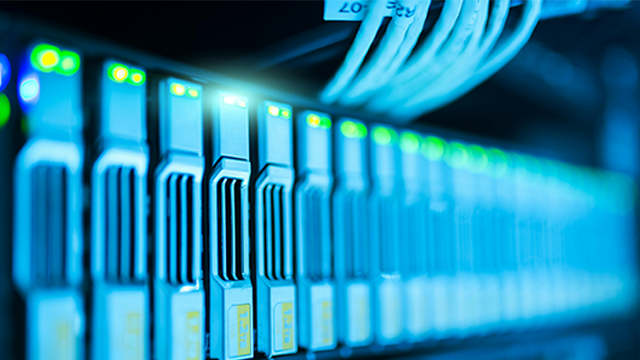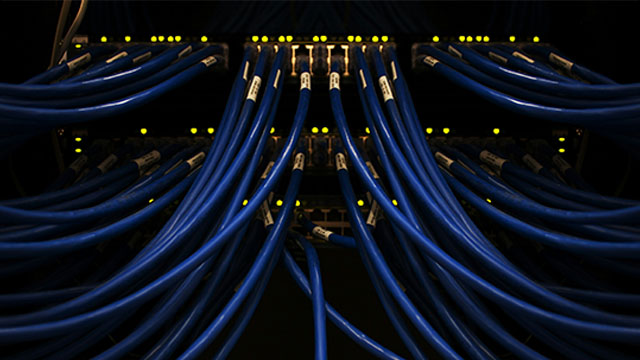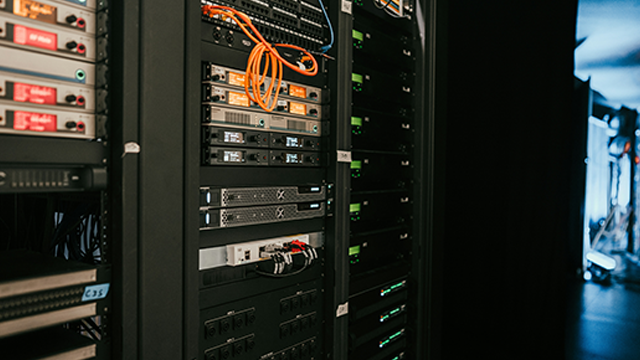The backbone of the internet and most businesses now is a data center, but they’re a complex area of tech often misunderstood by all but the most specialist of IT technicians. Indeed with so many variables within a data center – in terms of hardware, software and functionality – this is perhaps no surprise.
At Procurri, we hire only Level 3 and 4 technicians and engineers with unrivalled experience in data center configurations of all types. Here, we explain the ins and outs of data center components to help give clarity around what they are and what they do, as well as how best to maintain their performance, security and functionality.
The role of Data Centers
Data centers can be considered the hubs of data that powers the internet and IT systems. They are responsible for the storage, processing and distribution of data and must be reliable, secure and functional as much of the time as possible so as not to disrupt the service received by the end user. For most businesses, anything less than 99.99% uptime would be considered unacceptable, as IT capability is business-critical.
There are several types of data centers, including:
- Enterprise data centers – centers owned and operated by a single organization, purpose-built for their own IT operations, hosting all their critical systems. These data centers are usually located on the business’ own premises or at a dedicated facility. This gives the organization complete control over their design, security and maintenance
- Co-location data centers – centers rented from a third party to manage their data, with the power, cooling, physical security and connectivity all supplied by the center owner. This is more cost-effective for most businesses as it’s cheaper than constructing their own private data center, and allows for them to retain control over their own servers and software
- Hyperscale data centers – centers owned and operated by a Cloud provider that can support mass-scale computing. This allows businesses to scale, automate and operate as efficiently as possible, but includes hundreds of thousands of servers supporting a variety of customers
- Edge data centers – centers owned by Cloud providers or specialized companies that process data close to the end user to reduce latency. This works ideally for the IoT, 5G and streaming, and works on a smaller footprint strategically distributed across multiple locations. Edge data centers are often integrated within larger hyperscale data centers
- Managed Services data centers – centers owned by service providers who offer fully managed hosting. The provider manages the data center and all relevant services around its operation, so the client can focus on their applications. This allows organizations to manage their data centers securely without the need for in-house expertise – so works well for small and medium-sized businesses
- Cloud data centers – centers owned by public or private Cloud service providers. The provider delivers on-demand computing resources with a virtualized infrastructure and pay-as-you-go models available.
What makes up the typical Data Center Infrastructure?
Data center infrastructure is considered all of the physical and digital elements that can be found within a data center. This includes:
- IT hardware
- Supporting (non-IT) hardware
- IT software.
The IT Components of Data Center Infrastructure
Data centers consist of large IT hardware components that handle their core computing, data processing and data transmission functions.
The IT components of the data center can be considered to be its ‘brains’. These include:
- Servers – rack servers, blade servers, tower servers, HPC (High-Performing Computing) servers
- Storage systems – SAN (Storage Area Networks), NAS (Network Attached Storage), DAS (Direct Attached Storage), flash arrays, SSD arrays, tape libraries
- Networking equipment – routers, switches, firewalls, load balancers, gateways, NICs (Network Interface Cards), cabling
- Security devices – IDS/IPS (Intrusion Detection Systems/Intrusion Prevention Systems), HSMs (Hardware Security Modules), NAC (Network Access Control) appliances
- Racks – server racks, cable management systems, KVM (Keyboard-Video-Mouse) switches
- Monitoring and management devices – environmental sensors, remote management modules.
Non-IT Components of Data Center Infrastructure
The non-IT components of data center infrastructure are physical elements that support the functionality of the IT hardware.
The non-IT components of the data center can be considered to be its ‘body’. These include:
- Power systems – UPS’ (Uninterruptible Power Supplies), PDUs (Power Distribution Units), generators, ATS (Automatic Transfer Switches), power cabling and grounding systems
- Cooling systems – CRAC (Computer Room Air Conditioning) units, CRAH (Computer Room Air Handler) units, chillers and condensers, in-row cooling systems, liquid cooling systems, raised floor systems
- Fire protection systems – smoke detection systems, fire suppression systems, dire extinguishers, fire alarm systems
- Physical security systems – biometric access controls, CCTV and other surveillance camera, security gates, alarm systems
- Cabling – structured cabling, cable trays and conduits, patch panels
- Building infrastructure – raised flooring, racks and containment systems for hot/cold areas, lighting systems, doors, access pathways
- Facilities management – BMS (Building Management Systems), DCIM (Data Center Infrastructure Management) tools, environmental sensors.
Although non-IT components may not necessarily fit into the expertise of specifically-hired IT staff, it should be noted that they are critical to the ongoing operations of the IT components; and should not be underestimated in their importance.
Supporting Data Center Infrastructure Components
Data centers also comprise non-hardware components that operate to support the data center’s functionality. These include:
- Software management tools – virtualization, orchestration, automation
- Network connectivity – fiber optics, ISPs, internet exchanges
- Disaster Recovery Systems – back-up data centers, failover sites.
What is DCIM?
DCIM is an acronym for Data Center Infrastructure Management. This is a system combining all operations and IT processes for a data center and oversees them all, using discovery, monitoring, reporting, and visualization to help manage the center in the most efficient way possible.
Physically, DCIM is a set of software, hardware, and sensors. Together these provide a centralized platform to manage the data center. This includes:
- Monitoring and managing IT assets as well as the supporting infrastructure, including:
- Monitoring power consumption
- Monitoring environmental conditions within the data center
- Optimizing performance
- Capacity planning
- Preventing downtime.
From a user’s perspective, a DCIM system presents all of this information in real-time on a dashboard for ease. The data can then be broken down and analysed in a variety of different ways to suit the business’ needs.
Replacing Data Center Components
With so many physical IT assets present in data centers, it is natural that parts require replacement from time to time. Rather than overhaul an entire data center for a single malfunctioning part, instead most can be removed and replaced.
Procurri holds the largest stockholding of data center hardware in the IT channel, and because we operate on a vendor-neutral basis, this includes hardware from all major OEMs. With several warehouses of stock located across the world, we’re able to quickly dispatch even the rarest and most legacy of parts.
What’s more, we offer new-in-pocket and refurbished parts, allowing us to offer a range that is unrivalled by any competitor. This allows us to bypass the supply chain shortages experienced by many and instead maintain our client’s data centers to the highest possible standard.
Help Managing Data Center Components
Data centers are complex in their configurations and with so many variables, can be difficult to manage. That’s where specialist companies such as Procurri come in – to help monitor, manage and maintain even the most complicated of setups. With remote and on-site support available around-the-clock alongside our vendor-neutral approach to services, we can help maximize performance, uptime and service to your end users.
Get in touch with the Procurri team today to discuss your data center component management needs!





